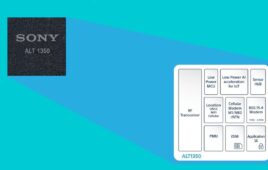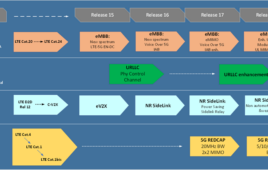 We were lucky enough to get our hands on an LG G3 well before it’s even been announced for U.S. release. The unit LG sent over for review is a Korean version, so there’s no cellular connection and that makes it tough to write a full review. But then quality isn’t what we want to talk about anyway: the main attraction of the G3 is the quad HD display.
We were lucky enough to get our hands on an LG G3 well before it’s even been announced for U.S. release. The unit LG sent over for review is a Korean version, so there’s no cellular connection and that makes it tough to write a full review. But then quality isn’t what we want to talk about anyway: the main attraction of the G3 is the quad HD display.
The 5.5-inch display packs an astounding 1440 x 2560 resolution and 534 PPI. Those are big numbers that put the LG well ahead of much of the competition but even without the official specs in mind, it’s easy to tell this screen is special.
Videos in 1440 are sharp and crammed with detail. Light, contrast and colors are true to life in images and video—although the hues lose a little luster when viewing at an angle. Even small text shows up crisp and clear, and all the performance ends up in a total smartphone not much bigger than other high-end Android phones.
The LG’s 13-megapixel camera also bares some similarities to its competitors. The 1/3-inch sensor, HDR and image stabilization are fairly standard features and made for good performance in all levels of light. The camera features “laser autofocus” and, for the most part, lives up to the futuristic sounding tag with snappy focusing. The performance stands out even more next to the clutter-free function set that includes novel items like a voice-activated shutter (say “cheese,” “whiskey,” or “kimchi” and it snaps a picture) and a depth of field mode.
But the real joy comes from showing off your shots on the G3’s display. Videos shot at 30 frames per second in 1080p look gorgeous. The G3 handles 4K and 120 frames per second slow-motion, too, but either option results in excessive file sizes or too jagged pixels. In standard mode though, it captures fluid movement and maintains sharp edges and outlines. Given the Korean version’s retractable TV antenna, we wished we could see what broadcast signals look like on the device. But alas, it doesn’t pick up channels here.
The G3 will be up against the Android elite including the S5 and the HTC One M8 when it finally shows up stateside. Its specs are awfully similar to those flagships: Snapdragon 801 processor, 16/32 GB of storage (expandable to 128 GB) and a 3,000 mAh battery.
It has some drawbacks like the power/volume controls mounted on the rear of the phone. I was still getting used to it after a few days and often found myself smudging my fingers over the camera lens as I searched. But compared to the clunky rear key on the G2, the G3’s relatively elegant volume controls—tucked under a solid, textured surface—and etched metal power button are an improvement.
But honestly, the back of the phone doesn’t matter much when there’s so much eye candy up front. If you’re going to use your phone for video, games, reading or showing off your gallery, the G3 should earn serious consideration alongside any other flagship Android. A G3 U.S. price and release date haven’t surfaced yet but the smartphone is priced at about $635 in Korea.
Update: The G3 is available for pre-order from T-Mobile for $599. It’s scheduled to hit retail stores July 16.




